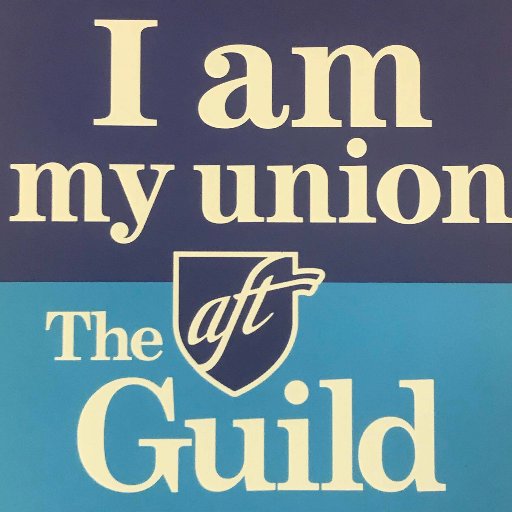Last fall, after Virginia turned to the right when the Republicans weaponized educational culture war issues, the vast majority of the mainstream coverage reveled in the horserace analysis but never engaged in any deeper examination of how we got to a place where debates around a Toni Morrison novel among other things could swing the balance of power in a key political battleground. The answer lies not just in the failure of the Democrats in that election or even the persistent drag of the never-ending pandemic, but also in the darker corners of the American right.
A few weeks before last November’s contests, the CT Insider back east published a great piece pondering why school boards there had become sites of ugly conflict:
Clearly, something is afoot. Why is this happening suddenly and simultaneously in so many different places around the state (and indeed the country)? Why is the pattern so similar? Why does it seem peculiar to affluent Connecticut towns? Why do some protests turn disruptive? Why pick on CRT, which schools don’t even teach (it’s a post-secondary pedagogical tool)? This doesn’t sound like something that just happened to occur to parents at a local bake sale . . . The explanation may lie with Steve Bannon. According to Bannon, “This is the Tea Party to the 10th power,” and “The path to save the nation is very simple. It’s going to go through the school boards.” . . . A picture emerges of a shadowy and labyrinthine network of astroturf groups funded by big money. Funders include the Koch network, Turning Points USA, the DeVos Family Foundation, the Ed Uihlein Foundation, Donors’ Trust, and the Heritage Foundation.
Thus, much like the victory of Scott Walker in Wisconsin and his subsequent successful assault on labor rights in 2011, the rage at the school board is one-part angry white soccer mom and another part Koch brother. While the racial resentment that the school board battles illustrate is as American and ever-present as apple pie, the road to retaking power through educational culture wars is part of a current, well-funded national strategy by some of the usual Dark Money suspects.
The consequences of these cynical political machinations have not just had a damaging effect on our politics but have also begun to make an already emerging teacher shortage much worse. As we head into the beginning of a new school year, there has been a lot of attention given to the national teacher shortage. At the Washington Post, the headline screamed, “`Never seen it this bad.’ America faces catastrophic teacher shortage,” while a recent Politico piece made it clear that “The teacher shortage problem is bad. Really bad.” Indeed, the national media landscape across the country has been littered with stories about states like Texas and Florida proposing to abandon credentialing standards simply in order get bodies in the classroom.
Here in San Diego, CBS news recently reported that:
San Diego County districts are hiring more new teachers to fill new or vacant positions since the outset of the pandemic. However, those numbers fall far short of per-pandemic numbers.
During the 2017-2018 school year, local districts hired 2,420 new teachers. In the months before COVID-19 took hold in San Diego County, the number of new teachers dropped by more than 8,000 to just over 1,600 new teachers hired during the 2019-2020 school year.
And as COVID-19 ravaged the county and students were forced to remote-learning, the numbers continued to drop.
Last year, during the 2021-2022 school year, San Diego County schools saw the fewest new teachers in five years, with only 1,382 new teachers entering county classrooms.
How bad is this national crisis really?
The Washington Post piece on the crisis notes that:
It is hard to know exactly how many U.S. classrooms are short of teachers for the 2022-2023 school year; no national database precisely tracks the issue. But state- and district-level reports have emerged across the country detailing staffing gaps that stretch from the hundreds to the thousands — and remain wide open as summer winds rapidly to a close.
Perhaps the best overview of this issue in local media came from Doug Porter at Words and Deeds who argues that the teacher shortage is more of a recruitment and retention problem than a shortage of actual humans who could do the job. After pondering the roots of the crisis from pandemic pressures, mental health woes, low pay, lack of respect, the long-running neoliberal push toward privatization and union-busting, and current attacks on education by ideologically motivated culture warriors and anti-vax zealots, Porter wryly observes that, “having your profession targeted by bigots bearing threats and lies isn’t exactly encouraging for education as a career choice.”
Many San Diego K-12 educators have seen the results of this national attack on the profession by well-funded ideologues and see how damaging it has become. Francisco Garcia, an instructor at Roosevelt Middle School and an SDEA union member puts it this way:
Young potential teachers are very aware of the political climate. News feeds on their phone are incessantly providing articles about the politically-motivated policy shifts on what and how educators can teach in states like Florida and Texas. The pedagogical nature of teaching and the growth mindset in the instructional process are considerably compromised when teachers have to precariously wade through a hazardous ideological minefield on any given instructional day, California’s not there yet, but to a young college graduate, this aspect of teaching is not at all enticing. Emancipatory pedagogy diminishes while students’ voices are quelled in order to satisfy the demands of reactionary sectors in our society that aggressively bark the loudest.
With regard to the roots of the teacher shortage Garcia explained that, “The number of college graduates enrolling in teacher credential programs has been steadily decreasing over the last few years. Teacher preparation programs in California are just not as attractive to twenty-somethings as they were 10 or 20 years ago.”
This, combined with the high cost of living and housing on a teacher’s salary, make it less attractive to do a hard job with fewer resources at school and external pressures like the push toward privatization, deprofessionalization, and assaults on teachers’ unions.
And, as bad as this is for recruitment, Garcia thinks some of the short term, quick-fixes are also reason for great concern:
Because of the shortage of teachers nationwide, there is much talk about hiring people outside of the profession to teach. Additionally, there appears to be widespread momentum toward watering down the requirements to become a teacher. First of all, this is profoundly concerning because it deprofessionalizes the profession. Would you want a lawyer who went through a watered-down law school program and passed a “quickie” bar exam to represent you in court? Secondly, the deprofessionalization of education could potentially open the door to “fringy” and conspiracy theory-centered charter schools and educators more concerned with advancing their beliefs than they are with promoting the pluralistic democratizing values that unify Americans.
Thus the assault of the teacher profession at the K-12 level is really a more far-reaching attack on one of the cornerstones of our democracy. If we don’t successfully push back against it there, it doesn’t take a genius to see how the same strategy, slightly retooled, will be applied to higher education. Indeed, it is already beginning, and we need to be vigilant in defense of quality public education at all levels.
We ignore it at our peril.






0 Comments